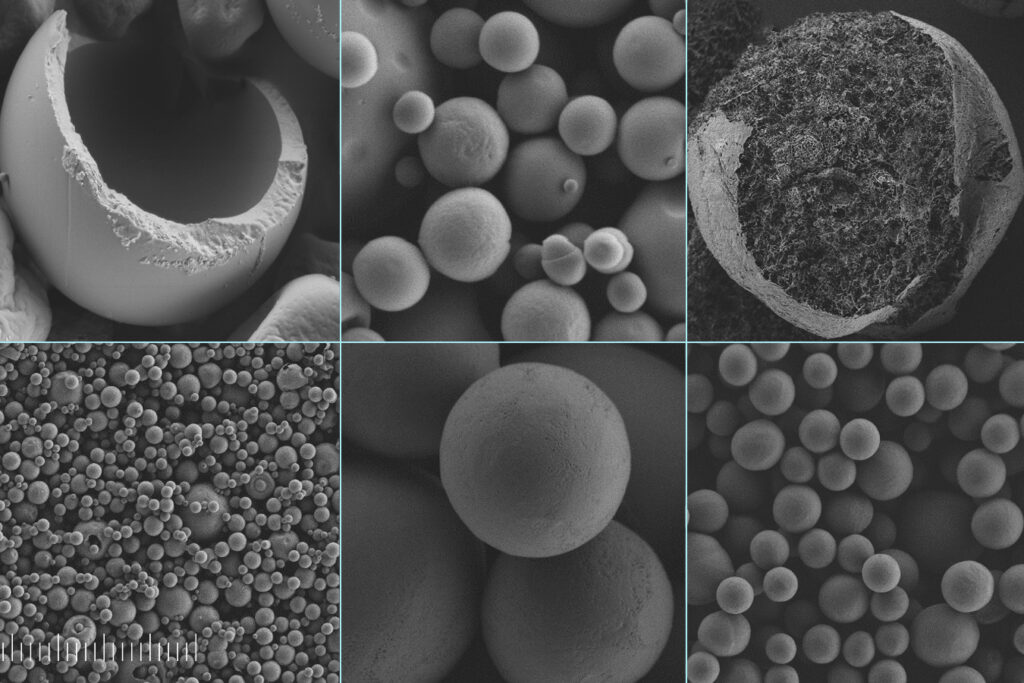
Silk offers an alternative to some microplastics
Microplastic, small plastic particles that are now found throughout the world in the air, water and soil, are increasingly recognized as a serious threat of pollution, and have been found in the bloodstream of animals and people around the world.
Some of these microplastics are deliberately added to various products, including agricultural chemicals, paints, cosmetics, and detergent – totaling around 50,000 tons per year in the European Union, according to the European Chemical Agency. The EU has stated that the microplastic added and unfinished must be eliminated in 2025, so the search is active for appropriate replacement, which is currently not there.
Now, the team of scientists in MIT and elsewhere has developed a silk -based system that can provide a cheap and easy to produce substitutes. This new process is explained in a paper in the journal Small, written by MIT Postdoc Muchun Liu, Professor of Civil Engineering and Benedetto Marelli, and five of the other in the BASF chemical company in Germany and the U.S.
Microplastic which is widely used in industrial products generally protects some active (or material) materials from degraded by air exposure or humidity, until the time they are needed. They give the release of slow active ingredients for the targeted time period and minimize side effects on their environment. For example, vitamins are often sent in the form of microcapsules that are packaged into pills or capsules, and pesticides and herbicides are shrouded as well. But the material used today for microencapsulation like that is plastic that survives in the environment for a long time. Until now, there is no practical and economic substitute available that will be decomposed naturally.
Most environmental microplastic loads come from other sources, such as degradation from time to time larger plastic objects such as bottles and packaging, and from the wear of car tires. Each of these sources may require its own type of solution to reduce its spread, said Marelli. The European Chemical Agency has estimated that the microplastics that were deliberately added representing around 10-15 percent of the total amount in the environment, but this source may be relatively easy to handle using this natural-based biodegradable replacement, he said.
We cannot solve all microplastic problems with one suitable solution for everything,” he said. “Ten percent of the large amount is still a large figure. … we will complete climate change and world pollution one percent at once. “
In contrast to high quality silk utas used for fine fabrics, silk protein used in new alternative materials is widely available and cheaper, said Liu. While the cocoon of silk worms must be difficult without difficulty to produce fine threads needed for fabrics, for this use, non-textile cocoons can be used, and silk fibers can be easily dissolved using water-based processes that can be discharged. The processing is very simple and can be adjusted so that the material produced can be adjusted to work on existing manufacturing equipment, has the potential to provide a simple “drop in” solution using an existing factory.
Silk is recognized as safe for food or medical use, because it is not toxic and naturally decreases in the body. In laboratory tests, researchers show that silk -based coating materials can be used in standard spray -based manufacturing equipment that is available to make a standard water -soluble microencapsulation product, which is then tested in a greenhouse on corn plants. The test shows that it works better than the commercial products that exist, causing less damage to plants, said Liu.
While other groups have proposed degraded encapsulation materials that can work on a small laboratory scale, Marelli said, “There is a strong need to achieve high content activity encapsulation to open doors for commercial use. The only way to have an impact is where we can not only replace synthetic polymers with partners that can be cradable, but also achieve the same performance, if not better. “
The secret to making compatible materials with existing equipment, Liu explained, is in the focus of silk material. By actually adjusting the polymer chain settings from silk and the addition of surfactants, it is possible to perfect the properties of the coating produced as soon as they dry and harden. The material can be in the form of hydrophobic (repetition of water) even though it is made and processed in a water solution, or can be in the form of hydrophilic (water taking), or anywhere, and for the applications provided can be made to match the characteristics of the material used to be replaced.
To arrive at a practical solution, Liu must develop a way to freeze the formation of materials that are installed when formed, to study the process of formation in detail. He did this using a special spray freezing system, and was able to observe precisely how encapsulation works to control it better. Some of the “load” ingredients that are installed, whether it is pesticides or nutrients or enzymes, dissolves in water and some is not, and they interact in different ways with coating materials.
“To summarize different materials, we must learn how the polymer chain interacts and whether they are compatible with different active ingredients in suspension,” he said. The load and coating ingredients are mixed together in the solution and then sprayed. When drops are formed, the charge tends to be embedded in a coating shell, whether it is original synthetic plastic or new silk material.
This new method can use low -quality silk that cannot be used for fabrics, and the large amount currently discarded because they do not have significant uses, said Liu. It can also use used silk cloth used, divert the material from being discarded in a landfill.
At present, 90 percent of world silk production occurs in China, said Marelli, but that is mostly because China has perfected high -quality silk yarn production needed for fabrics. But because this process uses bulk silk and is not necessary for that quality level, production can be easily improved in other parts of the world to meet local demand if this process is widely used, he said.
“This elegant and smart study illustrates a sustainable and cradable -based silk -based replacement for microplastic encaps, which is an urgent environmental challenge,” said Alon Gorodetsky, a chemical engineering professor and biomolecular at the University of California in Irvine, which is not related to this research . “The modularity of the material described and the scalability of the manufacturing process is the main advantage that indicates the translation well into the real world application.”
This process is “representing the potentially very significant progress in sending active materials for various industries, especially agriculture,” said Jason White, Director of the Connecticut Agricultural Experiment Station, which is also not related to this work. “Given the current and future challenges related to food insecurity, agricultural production, and climate change, new strategies like this are needed.”
The research team also included Pierre-Eric Millard, Ophelie Zeyons, Henning Urch, Douglas Findley and Rupert Konradi from Basf Corporation, in Germany and in the US. This work is supported by BASF through the NorthEast Research Alliance (NORA).




